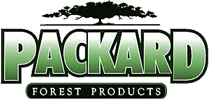
Where it Grows
Eastern U.S., principally Northern and Lake states. The average tree is 60 to 70 feet in height. Birch prefers valleys and stream banks although it adapts itself to higher grounds.
Main Uses
Furniture, millwork and paneling, doors, flooring, kitchen cabinets, turnings and toys.
Relative Abundance
0.7 percent of total U.S. hardwoods commercially available.
Did You Know?
Native Americans often rolled and burned birch bark to keep mosquitoes away.
General Description
Yellow birch has a white sapwood and light reddish brown heartwood. The wood is generally straight-grained with a fine uniform texture. Generally characterized by a plain and often curly or wavy pattern.
Grades of Yellow Birch:
[wpcol_1third id=”” class=”” style=””]
[/wpcol_1third] [wpcol_1third id=”” class=”” style=””]
#1 Yellow Birch:

Click to Enlarge
[/wpcol_1third] [wpcol_1third_end id=”” class=”” style=””]
#2 Yellow Birch:

Click to Enlarge
[/wpcol_1third_end]
Working Properties
The wood works fairly easily, glues well with care, takes stain extremely well, and nails and screws satisfactorily where pre-boring is advised. It dries rather slowly with little degrade, but it has moderately high shrinkage, so is susceptible to movement in performance.
Physical Properties
The wood of yellow birch is heavy, hard and strong. It has very good bending properties, with good crushing strength and shock resistance.


